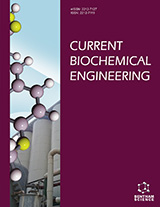Abstract
Azo dyes, which are considered as the most recalcitrant and persistent among all groups of dye, were able to be biodegraded by various types of bacteria. The biodegradation efficiency can be improved by applying immobilization technology on specific bacteria. In this study, a novel approach by developing a thin lm carried with bacteria and attached on a carrier was used to study the azo dye degradation. The paint-PVA biofilm was formed and provided with an alternative and a potentially practical use. However, the cell activities required further recovery operations prior to use in biodegradation of azo dye. The optimal temperature of paint-PVA immobilized cells showed the best performance on biodegradation at 35°C to 37°C, the identical optimal temperature range with Ca-alginate immobilized cells, but the favorable range of pH is quite large which is from 5 to 9. In this system, the kinetics was also investigated to obtain the values of Vmax of 2.66 mg g-1 h-1 and Km of 161 mg L-1. The slower biodegradation rate was explained by small value of diffusion coefficient of 2.12 x 10-7 cm s-1. The immobilized biofilm showed a high stability in re-use for dye degradation.
Keywords: Azo dye, biodegradation, immobilization, paint-PVA.
 35
35
















